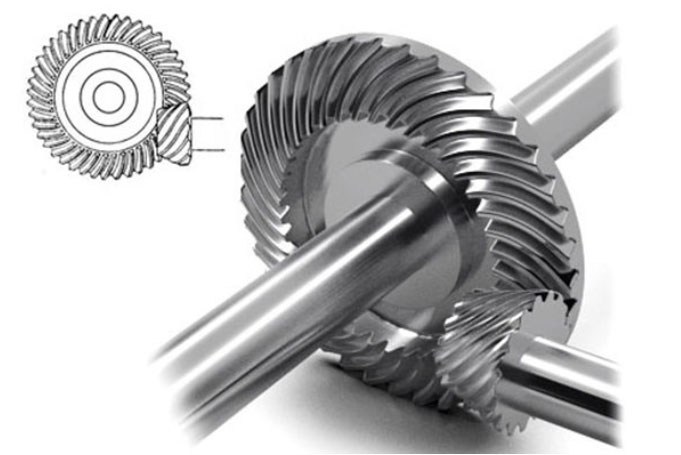
Hypoid gears offer several advantages and also present some unique challenges in gear systems.
Advantages of Hypoid Gears:
- High Torque Capacity: Hypoid gears can transmit high torque due to their large contact area and robust tooth engagement. This makes them suitable for applications that require heavy-duty power transmission.
- Offset Design: The offset axes of hypoid gears allow for compact gear system design. This is especially advantageous in applications with space limitations or where a low-profile design is required.
- Smooth Operation: Hypoid gears exhibit smooth and quiet operation due to their hyperboloidal tooth profile and sliding action during meshing. This reduces noise and vibration compared to other gear types, such as straight bevel gears.
- Efficient Power Transmission: The hypoid gear design provides high gear ratios, allowing for efficient power transmission. This is particularly beneficial in applications where speed reduction or speed increase is necessary.
- Versatility in Shaft Orientation: Hypoid gears can accommodate various shaft orientations, including non-parallel and non-intersecting shafts. This flexibility expands their application range in different industries.
- Load Distribution: The offset nature of hypoid gears results in improved load distribution across the gear teeth. This helps reduce wear and extends gear system life.
Challenges of Hypoid Gears:
- Complex Design and Manufacturing: The design and manufacturing of hypoid gears are more complex compared to other gear types. Achieving the required gear geometry, tooth contact, and proper meshing require advanced design expertise and specialized manufacturing processes.
- Axial Thrust: Hypoid gears generate axial thrust forces due to their offset design. Proper management of axial thrust, such as incorporating thrust bearings or providing adequate lubrication, is crucial to ensure smooth operation and prevent premature wear.
- Lubrication and Cooling: The sliding action and increased surface contact of hypoid gears result in higher friction and heat generation. Effective lubrication and cooling systems are essential to maintain proper gear performance, prevent overheating, and extend gear life.
- Higher Manufacturing Costs: The complexity and specialized manufacturing processes involved in producing hypoid gears can lead to higher manufacturing costs compared to simpler gear types. This can impact the overall cost of gear systems that incorporate hypoid gears.
- Limited Interchangeability: Hypoid gears are not interchangeable with other gear types due to their unique tooth geometry and offset design. This can make replacements and spare part management more challenging.
- Sensitivity to Misalignment: Hypoid gears are sensitive to misalignment, which can result in increased noise, vibration, and reduced gear system life. Proper alignment during installation and regular inspections are necessary to maintain optimal performance.
Despite the challenges, hypoid gears are widely used in various industries due to their unique advantages in terms of torque capacity, compactness, and smooth operation. Through careful design, precise manufacturing, and proper maintenance, the challenges associated with hypoid gears can be effectively addressed, resulting in reliable and efficient gear systems.
